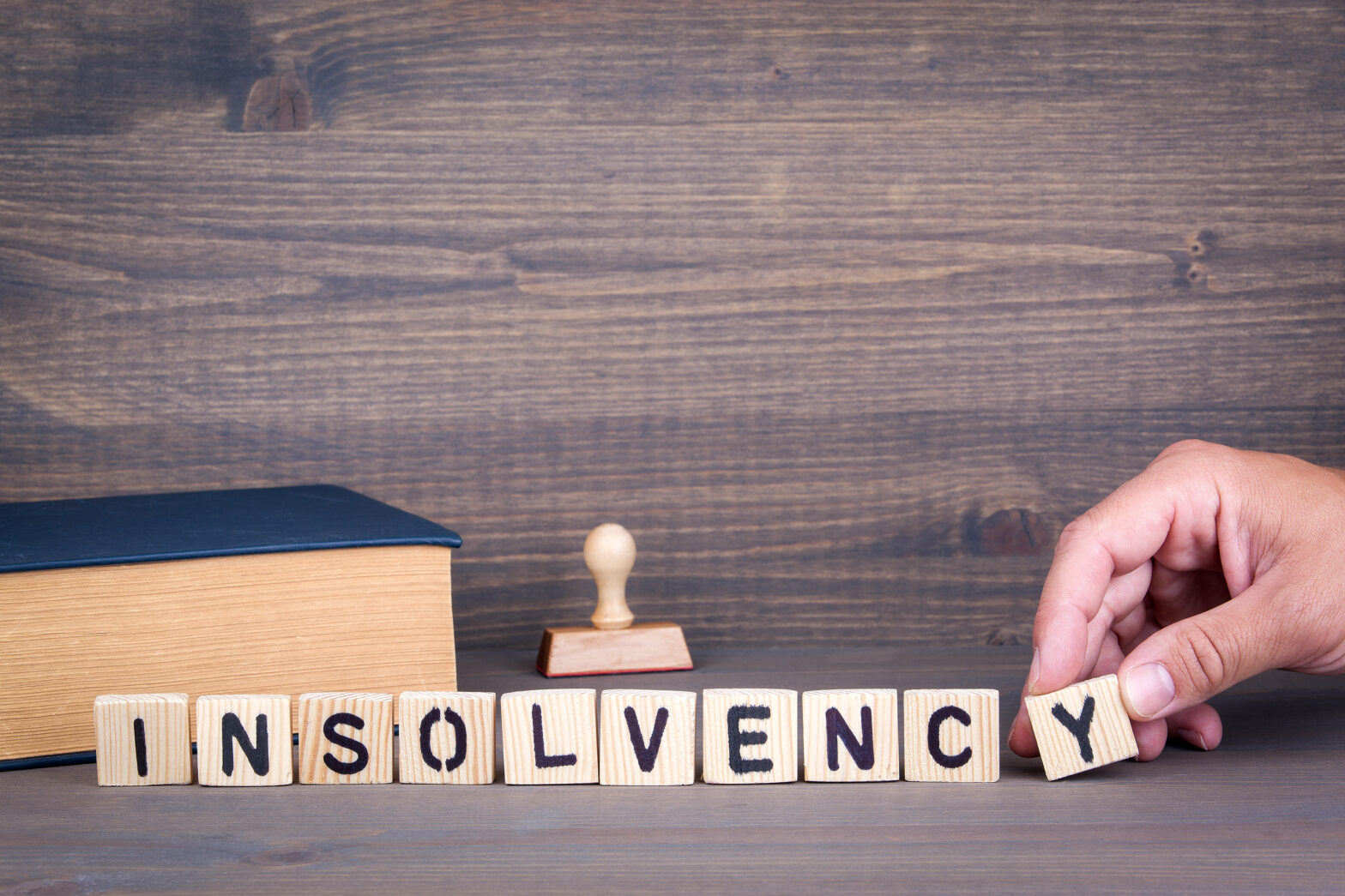Ian Wood had been running his design business for 11 years, but it took just a few months for it to go from losing a major client to liquidation.
‘It was a small company, but we’d done a lot to build it,’ says the 56-year-old Yorkshireman. ‘I can’t stress how much this hurts anybody.’
When Wood realised his business was in serious trouble, he spoke to his 14 staff and persuaded all of them to take a pay cut. The sacrifice was in vain. Weeks later he met them again, to tell them the bank had decided to put the company into liquidation. ‘There were a lot of tears shed at that meeting,’ he recalls.
Wood is now the MD of design agency ICM Creative and the experience of the liquidation is nearly 20 years behind him. Nevertheless, the pain he’s talking about still seems raw and he has a lot of sympathy for entrepreneurs facing another downturn.
‘When people have got a family and it all goes upside down and they lose everything, you’ve got to feel for them,’ he says. ‘There are some really hard-working, clever people out there who are going to have a stinker of a Christmas.’
Troubled times
Unfortunately, the statistics bear out Wood’s view. There were 3,560 company liquidations in the second quarter of 2008, an increase of 15 per cent on the same period last year.
Accountancy firm BDO Stoy Hayward predicted in May that there would be 17,874 failures during 2008, rising to 19,124 in 2009 (see table). Shay Bannon, partner at BDO, says those forecasts now look optimistic.
‘Our predictions in May were based on anticipated GDP growth of 1.5 per cent in 2008 and 1.7 per cent in 2009. Although those figures looked a bit gloomy at the time, we now know they weren’t gloomy enough,’ he says.
Growth forecasts have been slashed, with the OECD even predicting the UK will be in recession by the end of the year. Near-zero growth will send insolvencies soaring, says Bannon.
See also: Purchasing from a liquidator – While pricing can be attractive, buying a distressed company has its pitfalls. Here are the traps to watch out for when you’re bargain-hunting
Keeping the wolf from the door
The first priority of any business facing insolvency is clearly to try and avoid it. That sounds obvious, but as Wood explains, it’s all too common for owners to go into denial.
‘People think that if they ignore the problem, some miraculous event might come to the rescue,’ he says. ‘It doesn’t. You’ve got to act quickly for everybody’s sake.’
Andrew Stoneman, a partner at turnaround specialist MCR, agrees. ‘A lot of directors deny the problem. They keep saying “it’s fine” until one day they say “we’re going bust tomorrow”.’
Stoneman recently came to the rescue of Superhire, a ‘reasonably profitable’ supplier of props to the film and TV industries.
The business had massively over-geared itself via a sale-and-leaseback deal on its two north-west London warehouses, says Stoneman.
‘Superhire was a classic example of good horse, poor rider.’ He adds. ‘That’s the kind of business we’re interested in.’
When Superhire went into administration in June, MCR ran the business for eight weeks, ‘cost cutting, realigning the business, speaking to key customers and staff, making sure processes worked, and we controlled the revenues’. In the event, a deal was struck with the two landlords, all jobs were preserved and the business was bought as a going concern by a group of private investors.
Paul de la Peña, a partner specialising in insolvency at law firm Eversheds, says there is now a proliferation of companies which offer early help to troubled businesses.
‘If you go back 15 years, the insolvency environment consisted of insolvency practitioners (IPs) who took appointments and a few troubleshooter-type directors. Now there’s a whole raft of IPs who are generally accountants, but can offer early-stage turnaround advice, as well as a few boutique firms that specialise in this area,’ he says.
Such help doesn’t always come cheap, as Wood recalls. ‘What really annoyed me was the amount of money the insolvency company took out of what was left [of the business],’ he says. ‘It was astronomical.’
Stoneman admits that the costs associated with insolvency can be high, but defends his industry. ‘It’s a massively regulated market and all the fees are very transparent. IPs are not allowed to add on success fees.’
Helping troubled companies is what ‘gets him out of bed in the morning’, Stoneman claims. ‘There have been a lot of times, all documented, when we have written off thousands of pounds just because we want to help people who are in business,’ he states.
Don’t delay
Advice for companies in trouble does not differ much, whoever you talk to. Mike Prangley, a partner at BDO Stoy Hayward, says identifying the problem early and talking to key stakeholders (especially creditors and suppliers) is vital as the chances of a sympathetic hearing will be much greater.
That’s the route Wood took when his business faced insolvency. ‘I went to every supplier and said: “You can either take a swing at me or accept what’s happened.” Most of them chose to accept what happened. The most I owed any one person by the end was £2,000.’
Your focus will switch from profitability to cash, Prangley notes, so you’ll capitulate on a disputed invoice in order to get some money in. You need to set up weekly or even daily objectives and a swift, accurate flow of information to make sure you’re meeting your targets.
Cutting all marketing spend may be a mistake, Prangley adds. ‘It’s counter-intuitive, but you may want to spread some cash around doing promotions or offers which can help your cash flow by getting stock out of the door.’
Keeping it legal
You should also be aware of your legal responsibilities, as de la Peña explains: ‘If at any time the directors know, or ought reasonably to have known, the company is going to go into insolvency or liquidation, their duty is to minimise losses to creditors.’
This is when things get tricky. At what moment do you “know” the company will go under? ‘It’s not an overnight thing,’ says Wood. ‘It doesn’t just dawn on you that it’s going to happen. It’s over a three- to six-month period where you’re aware things are getting worse and worse.’
To be on the safe side, you need to act as soon as there’s ‘a sniff of an insolvency issue’, says de la Peña. ‘Have a board meeting and share everything. Take minutes about what you have done and decided to do.’
If you get it wrong you could – in theory – be sued for wrongful trading. ‘Take a case where the directors all upped and resigned when they realised the business was going under, and the company immediately collapsed,’ says de la Peña. ‘Someone could say, if you’d found an IP you could have saved x million and, in theory, you could be liable for that loss.’
The reality is that such claims are rare. De la Peña says ‘a handful of cases’ a year come to court (‘I’d guess less than ten’).
Stoneman agrees. ‘The Insolvency Act we have is 22 years old, and the measures are very difficult to enforce. My view is it doesn’t have a lot of teeth. If I was to take a wrongful trading case against a director it would cost me a fortune in legal fees – and who’s the judge going to favour, a poor business owner who’s gone bankrupt or an IP and a top City lawyer?’
Banned from business – Disqualification risks
A greater risk, says de le Peña, is that directors of bust companies will be disqualified by the Department for Business, Enterprise & Regulatory Reform from holding directorships in the future. ‘Between 1,000 and 1,500 disqualifications are made every year,’ he says. ‘Normally you are disqualified for a fixed period rather than forever, but it still takes away your livelihood for that time.’
It’s never surprising when lawyers and advisers recommend taking advice, but this may be one occasion you can ill afford not to. ‘If you are trading through the period where you know about the insolvency, it can get complicated,’ says de la Peña. ‘The short point is, you’re a lot less likely to get it wrong if you take advice.’
However distressing insolvency is for a business owner, it’s not the end of the world, as Wood confirms. ‘We started up again pretty quickly afterwards, and if there were people I’d let down, I made sure they recouped their losses,’ he states.
As ever in business, the main thing is to maintain good relationships, Wood adds. ‘Don’t run away, hide, move or disappear. Tell everybody what’s happened. Nine times out of ten they’ll understand – they may have been through it themselves.
‘If you do set up again, these are the people you’re going to have to rely on.’






